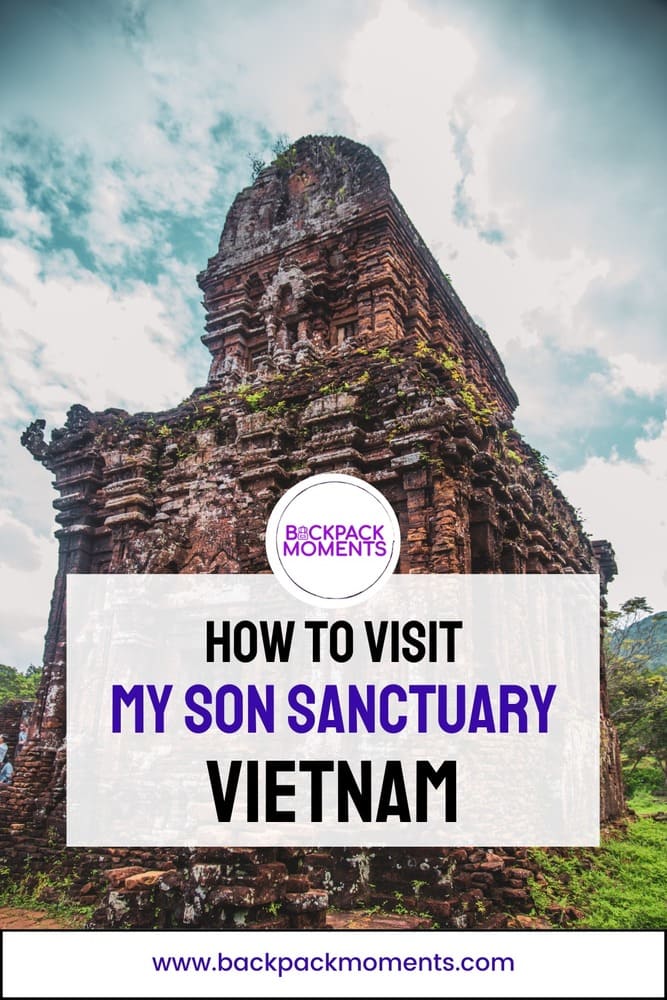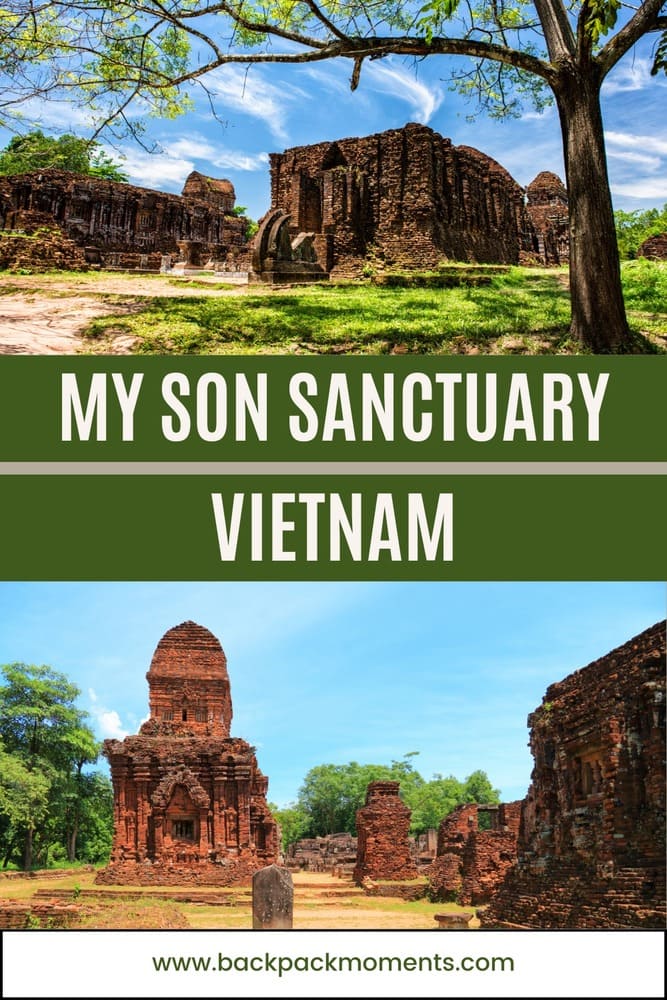How to Visit Mỹ Sơn Sanctuary as a Day Trip
This post may contain affiliate links. If you make a purchase using one of these links, I may receive a small reward at no extra cost to you. See my Disclosure Policy for more information.
Finding Hindu temples in Vietnam may seem surprising unless you know about the Champa Kingdom.
An empire that survived 17 centuries and, most importantly to this article, built intricate temples that survive to this day. One of the best-preserved sacred religious sites of the Champa is the Mỹ Sơn Sanctuary.

The site is near Hoi An and makes for a nice day trip. The two places are connected in more than proximity: both are UNESCO heritage sites and both can thank the Polish architect and conservationist Kazimierz Kwiatkowski for restoring and preserving them.
In the following lines, you will learn how you too can visit the ruins of My Son and learn more about their history.
My Son is included in my 1 month Vietnam backpacking itinerary.
Quick Facts
- Opening Hours: 6:00 – 17:00
- Entrance Fee: 150.000 VND (~6 USD) for foreigners and 100.000 VND for locals. You can book a ticket online or buy it at the entrance gate.
- Location: [Map]
- Distance from Hoi An: ~37 km (~1 hour by motorcycle)
- Distance from Da Nang: ~42 km
- Best organized tour: This early morning tour.

A Quick History of My Son Sanctuary
The first temples at My Son were built in the 4th century, though most of the remaining temples you will see there date from the 8th to 11th centuries.
It was influenced by Indian religious architecture and spirituality and thrived as a cultural and ceremonial hub. The Champa Kingdom was a big deal back in the day! It traded via sea routes with the other empires of the time and at its peak in the 10th century was rich and prosperous.
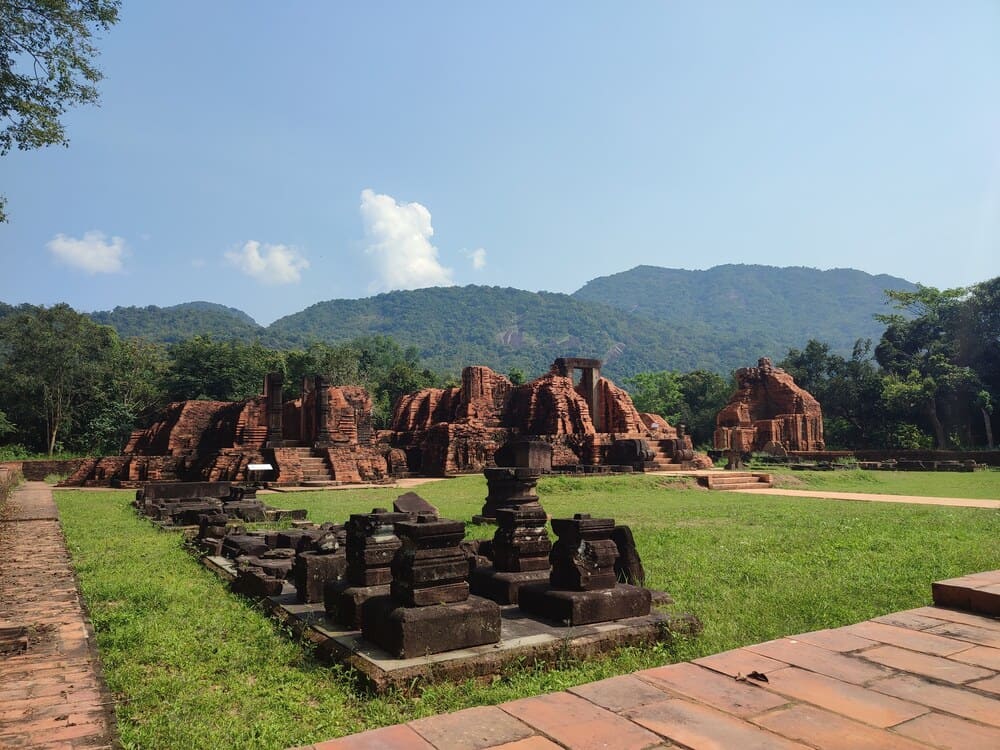
As the Kingdom declined, My Son was abandoned and forgotten. Lost deep in the jungle. Until its rediscovery in the 19th century by French archeologists.
Unfortunately, in the 20th century with the Vietnam War / Resistance War Against America, My Son was caught in the crossfire. Viet Cong had set up a base there and the Americans, known for their carpet bombing of Vietnam, didn’t really care much for archeological heritage.
What is left at My Son today is largely the result of conservation efforts starting in the 1980s and spearheaded by Kazimierz Kwiatkowski – a conservationist revered in Vietnam.
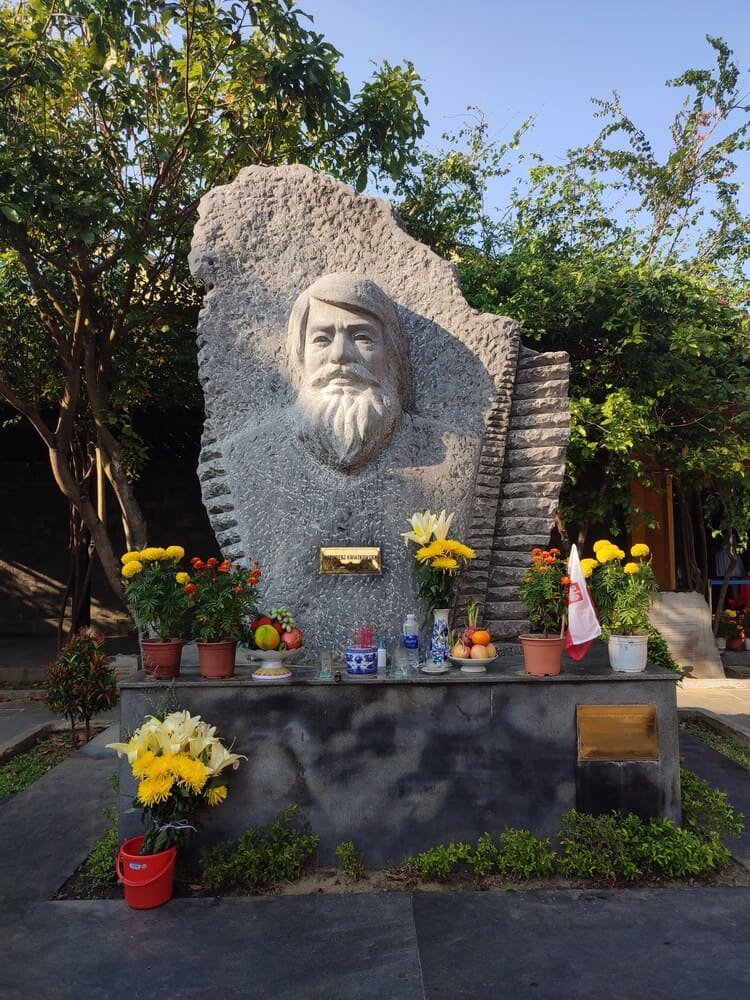
How to get to My Son Sanctuary
You can easily reach My Son Sanctuary from Hoi An and Da Nang on a half-day trip. It takes around an hour to reach. Here are your different options.
By scooter
I recommend renting a scooter and going by yourself. Everyone and their mother rides a scooter in Vietnam – sometimes together, plus the whole extended family – I once saw 6 souls on 1 motorcycle!
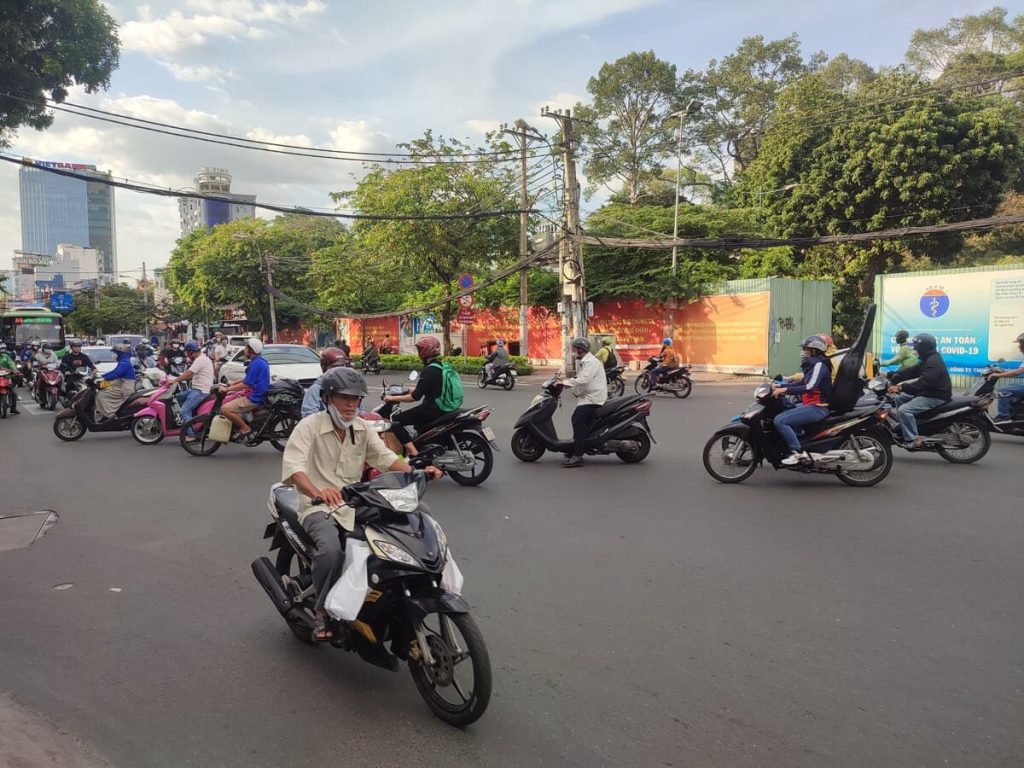
You can rent a motorcycle from most guesthouses in both Hoi An and Da Nang. Even if yours doesn’t have any available, you will find a renter just around the corner.
The price for a day rental is around 150.000 VND (~6 USD). Fuel is pretty cheap at ~22.000 VND/liter.
Getting to the My Son Sanctuary grounds is straightforward – the roads aren’t very big and traffic is mostly light. Rural Vietnam keeps on slowly living around you as you zoom past.
Shared Shuttle Bus
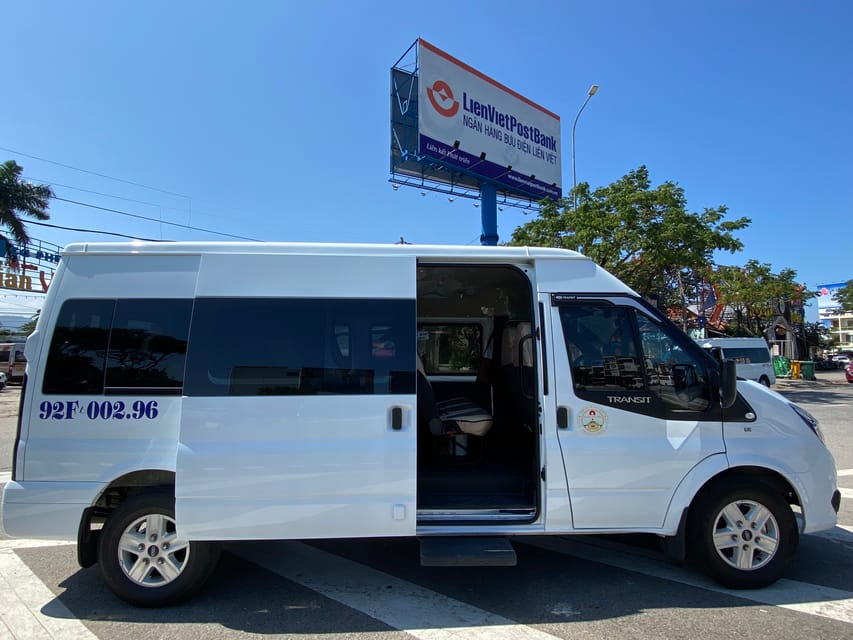
If you want to be independent but can’t (or don’t want to) ride a scooter, you can book a round trip on a shared shuttle bus.
The shuttle bus departs from Hoi An and Da Nang, both at 8:00 AM, arrives at My Son around 9:15, waits for you to explore for 2.5 hours, then drives you back. You will be back in Hoi An/Da Nang around 13:00-13:30.
It’s a bargain and is 0 hassles. Perfect for those who don’t want tour groups but need the transport.
Private Transfer
Should you want a private transfer, worry not – Vietnam is overflowing with drivers ready to take you anywhere for a few bucks.
Go to any Facebook page about travel in Vietnam and say you’re coming to Hoi An – you will receive 5 transfer offers within 10 minutes, guaranteed!
If you want to organize a transfer the easier way, book it online.
Guided Tour including pick up
Some people swear by having a guide for My Son because of the ancient history and the insights from someone knowledgeable.
A guided tour is for you if you’re willing to pay a bit extra for a more tailored experience.
I can recommend these 2:
- An early morning visit (pick up at 5:30 AM) to beat the crowds and the heat. Perfect if you don’t mind waking up early. Book here.
- A guided tour + boat trip starting at 8:00 AM. Book here.
Exploring My Son Sanctuary: What to see
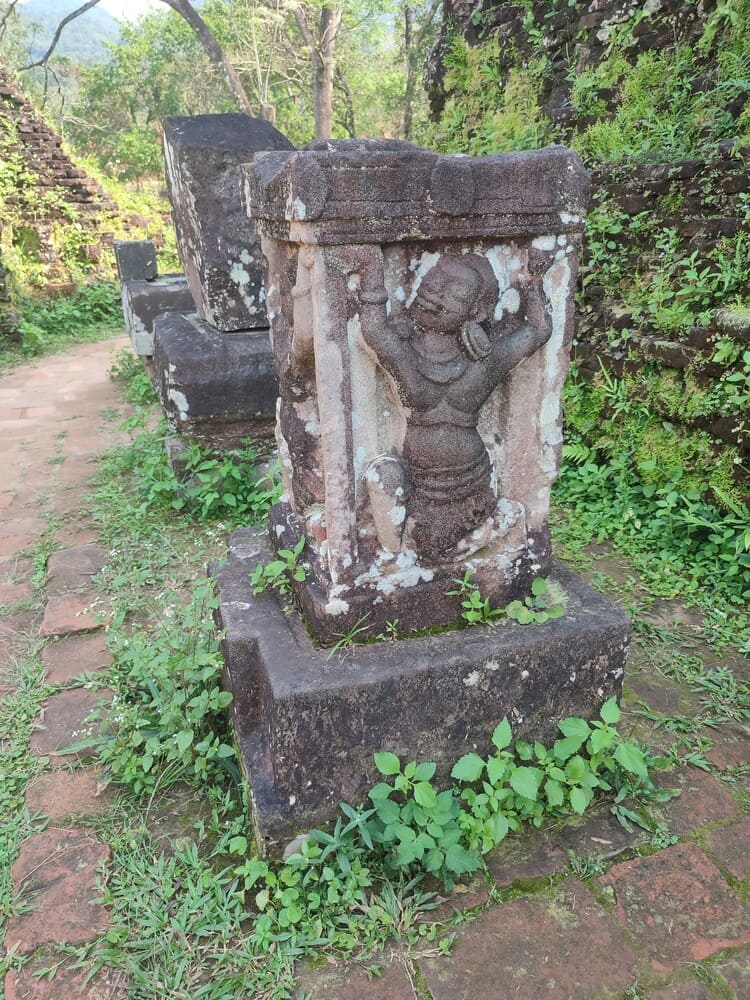

As you enter through the main gate after you buy a ticket, you can stop at the My Son Museum to check out all the little pieces, statues, fragments, inscriptions, etc. that are no longer on any of the temples.
The museum isn’t big, it will take around 15 minutes to explore and will provide a good introduction to what you’re about to see.
After that, you can proceed on foot, if it’s not too hot. The temples start from 1.5 km from the entrance – the path is paved and nice to walk on.
Alternatively, take the free electric shuttle to the temple grounds. It runs whenever visitors gather even if the
When you arrive at the actual site, the marked trail will take you clockwise around the ruins.
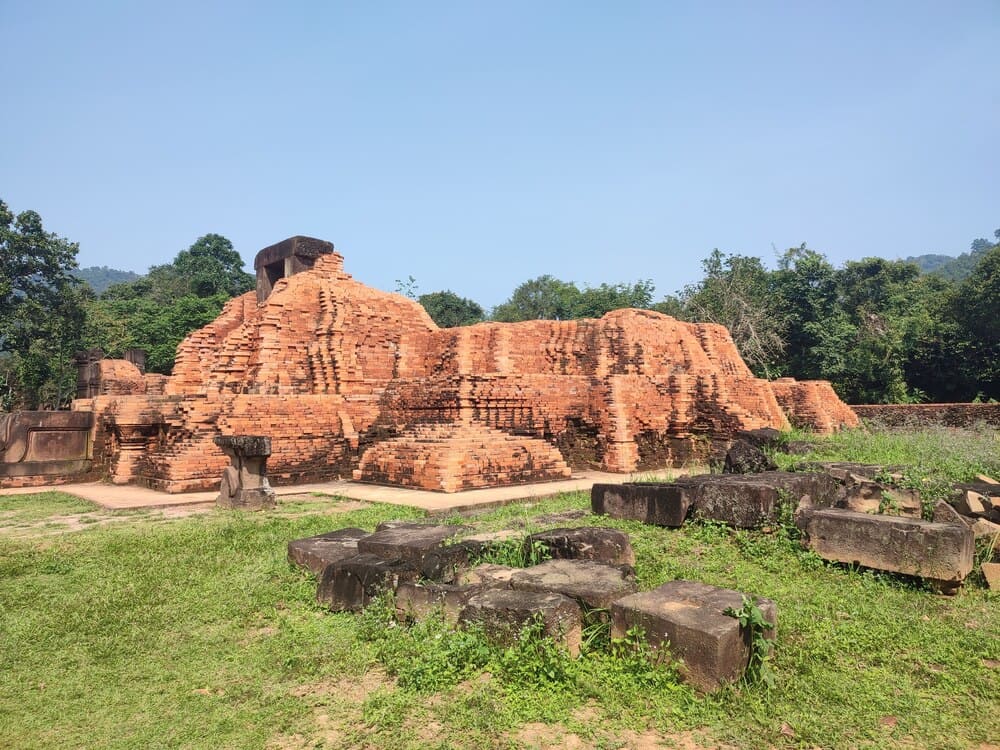
The different temples are divided into alphabetized areas. Beginning with Area A – the biggest and most important temples and reaching the letter K – the smallest ruins. Without going into too much detail, make sure to check out groups A, B, C, and D – these are the most impressive.
To go back, you can either walk or take the electric shuttle again.
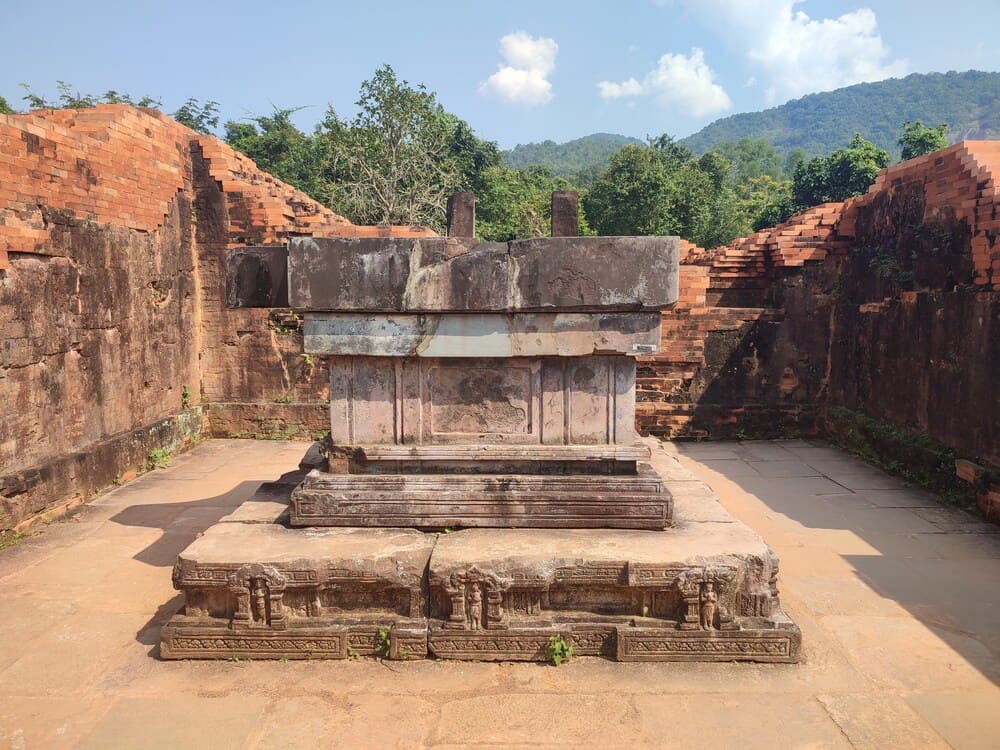
Don’t miss the Cham Dance!
After checking out all the cool ruins, don’t forget to stop by the main scene to experience a Cham Dance Performance.
It tells stories of a now-lost civilization whose people still live in this area of the world. It’s free to attend and watch the colorful dance accompanied by traditional music.
The performance takes just 15 minutes. It is held every day at 10:00, 10:45, 14:00, and 15:30.
My Son vs Angkor Wat
My Son is often called “The Angkor Wat of Vietnam”. The resemblance is there but the two temple complexes are very different.
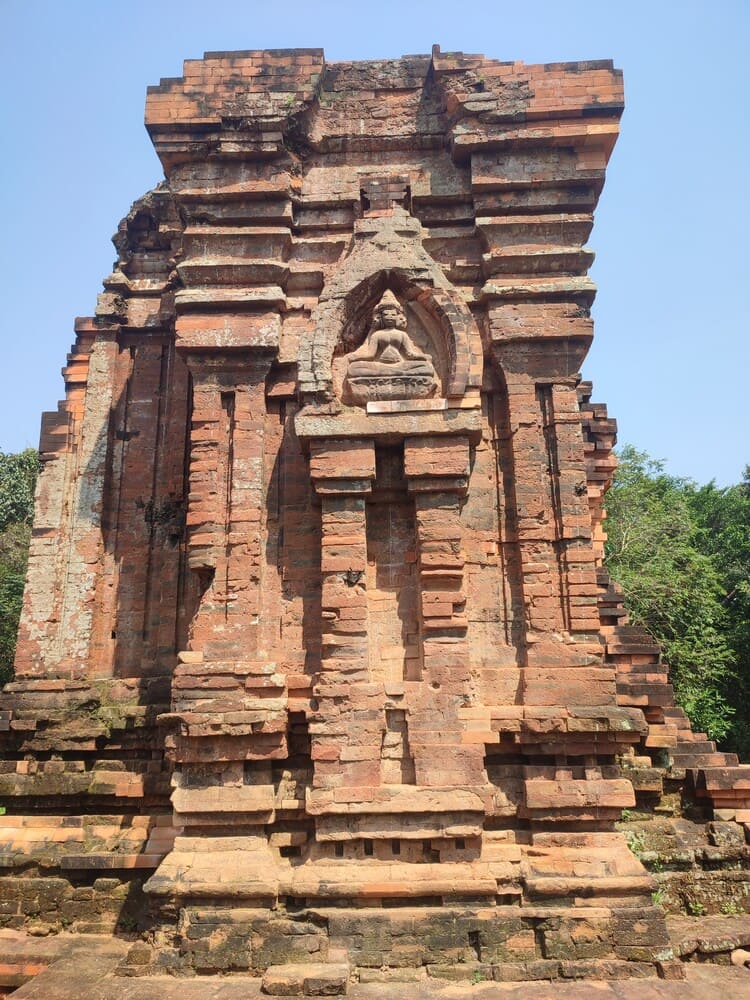
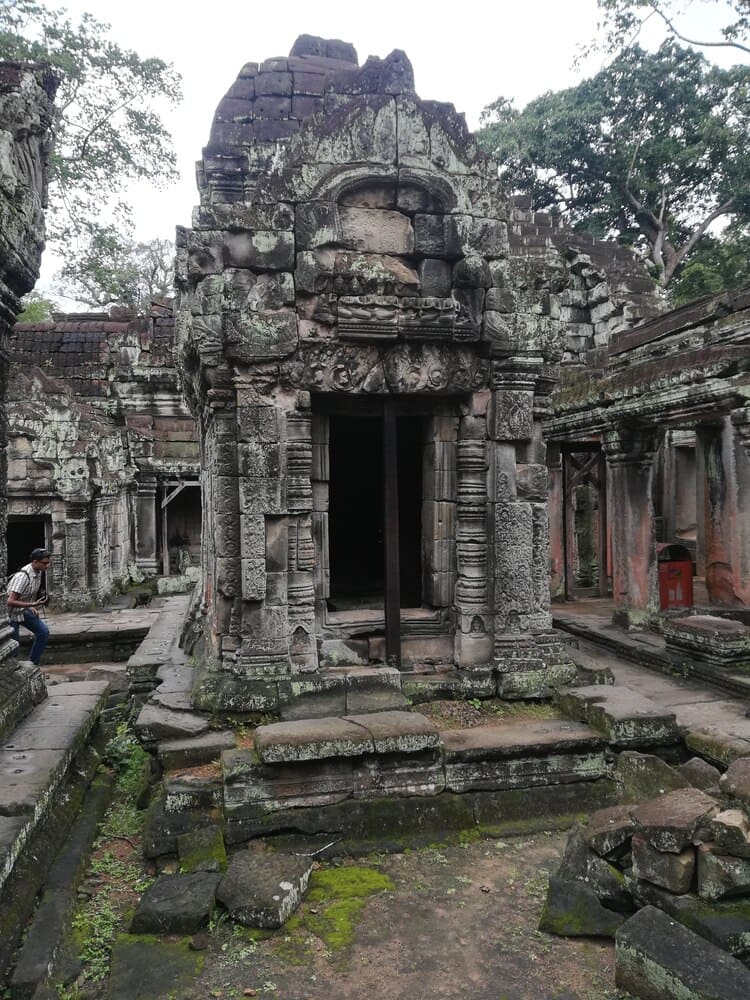
Many travelers complain they were disappointed with My Son because it wasn’t as big and magnificent as Angkor Wat. It sure isn’t, but this shouldn’t be a reason to disregard the site altogether or see it as less worthy.
In a nutshell, My Son is more intimate and reflective of Champa heritage, while Angkor Wat is grander, symbolizing the peak of the Khmer Empire.
| Aspect | My Son | Angkor Wat |
|---|---|---|
| Location | Quang Nam Province, Vietnam | Siem Reap, Cambodia |
| Built By | Champa Kingdom | Khmer Empire |
| Dating to | 4th–13th centuries | 12th century |
| Religion | Hinduism (dedicated to Shiva), later Buddhism. | Initially Hinduism (dedicated to Vishnu), later Buddhism. |
| UNESCO status | Inscribed in 1999 | Inscribed in 1992 |
| Size | Relatively small and very walkable. A cluster of temples spread over a compact area. | Vast. Over 400 sq. km. Definitely need a tuk-tuk, or at least a bicycle. |
| Condition | Partially ruined due to time and Vietnam War bombings. | Largely intact, with some areas deteriorating due to age. |
| Visitor Experience | Quiet and serene, with fewer tourists. | Majestic and grand, but often crowded |
| Entrance fee | 150.000 VND (~6 USD) | 37 USD for a day pass |
While comparing ancient temples in Southeast Asia, you should know there is another Angkorian temple in Laos called Vat Phou which is also inscribed as a UNESCO world heritage site.
Is My Son worth visiting?

If you’re remotely interested in ancient history, archeological remains, religious symbolism, and the accompanying architecture, then the My Son Sanctuary is worth a visit.
If you’ve been to other Champa temples (near Mui Ne and Nha Trang, for example) and ancient archeology doesn’t excite you all that much, perhaps My Son will not be a very interesting site to visit.
